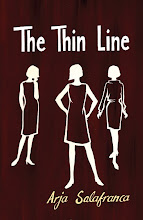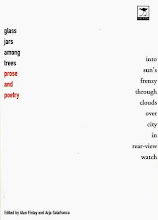 |
| A Wilder Rose is the story of the Little House books and the possible literary deception behind them |
This extremely readable
novel tells the story of Rose Wilder Lane, daughter of Laura Ingalls Wilder,
author of The Little House books (Little House on the Prairie and others in the
series). Or was Laura really the sole and accomplished author of the books?
Lane was already a
successful popular writer when she returned to her parents’ Ozark farm in Rocky
Ridge in 1928. Divorced from a husband, she had also lived abroad and had rich experiences
behind her. She had a plump portfolio of investments behind her. There she
imagined she would both add to her portfolio as well as build her parents a
modern farmhouse wired with electricity and indoor plumbing. She was making
money with her writing – and her income was going through the stock market
roof. Life was good. She was accompanied by her friend Troub, with whom she had
a relationship – although this is somewhat opaquely referred to in this novel.
Writer Albert re-imagines
the events of these years. With a foreboding known to us through history only
we read as Lane and her companion experience the horrors of the stock market crash
of 1929. Lane finds herself stuck through circumstance and desperation on the
farm; finds her relationship with Troub withering away bewilderingly: “We had
prided ourselves on enjoying each other, without obligation. And now that we
reached the end, neither of us gave way to tears – not then, anyway.” Troub
would later go on to write children’s novels penning the Sue Barton and Carol
Page series.
And into this chasm her
mother, a pioneer girl, comes to her with a scrap of a story of her early
years. It’s poorly written, hardly publishable, hardly even a book, but Lane
sets out to fix the writing, and it’s eventually published with more books
promised. The literary deception, begun so innocuously and innocently, is in
full force. Her mother will be known as the author of the children’s books –
even though the truth is, it’s more of a collaboration between mother and
daughter. Or is it?
This is a novel of that
collaboration, although there is still some doubt as to the veracity of that claim, as well as of the complicated knot of the mother/daughter
relationship between Laura and her only child, a tie that Lane sometimes felt
like a stranglehold, and of how Lane shaped her mother’s story into publishable
books.
The world of 1930s
small-town America is also intricately recreated in this book – a time when
modern conveniences such as electricity and plumbing were still luxuries in
rural areas; and pioneer women could still remember the wagons and wildness
that permeated their youth. But it’s a
bleak time in history with the country decimated by the disaster and the great
dust storms. When Lane travels the country, writing a book on it, the harshness
edges through: “Dust, dirt, wind. ‘We know where the dust comes from by its
colours,’ one farmer’s wife told me, holding her apron across her face.”
But it is also a story of
Lane herself – little known now beyond the history books – and it’s a
fascinating story. A woman who lived by her own rules in a time when most women
married and subsumed themselves in that bond; a woman who took up her pen and
wrote her way to fortune and kept on writing even when that pile disappeared. A
woman who had been born in poverty, who managed to move beyond her life’s circumstances.
Lane is an spirited woman and one of the
treasures of this novel is how enormously likeable she is; with Wittig creating
an empathy that leads you through the book. Lane’s life is at times unrelentingly hard in
those years: trapped, failing dental health, growing older, her life moving
away from her. But I found myself compulsively reading to the end, drawn on,
entranced by this woman’s strength and vigour.





.jpg)

No comments:
Post a Comment